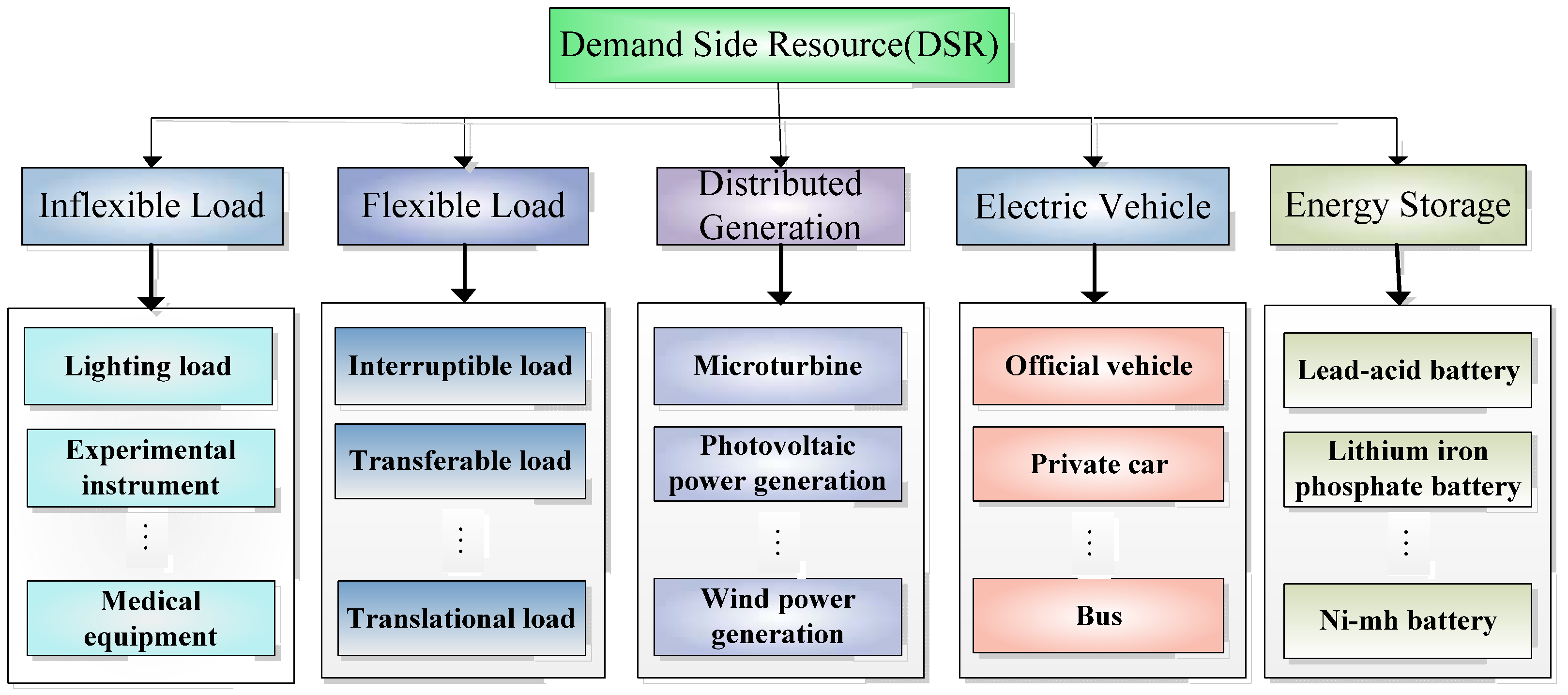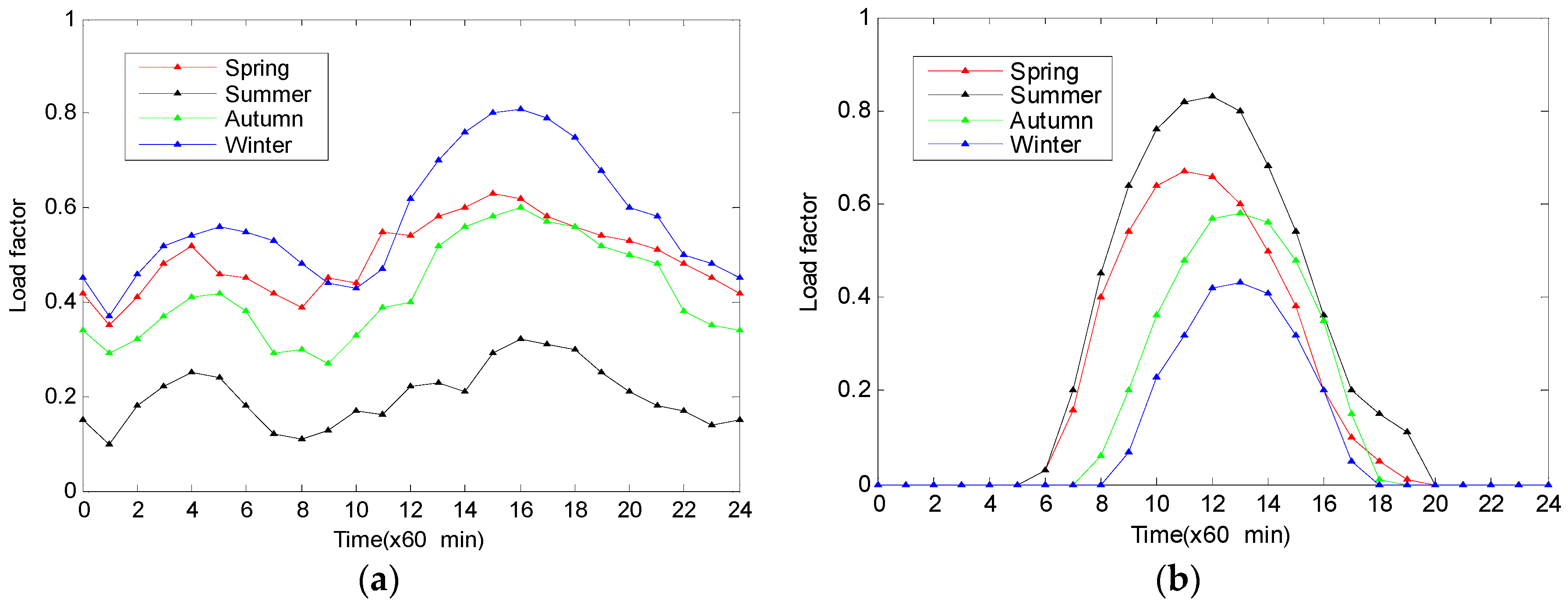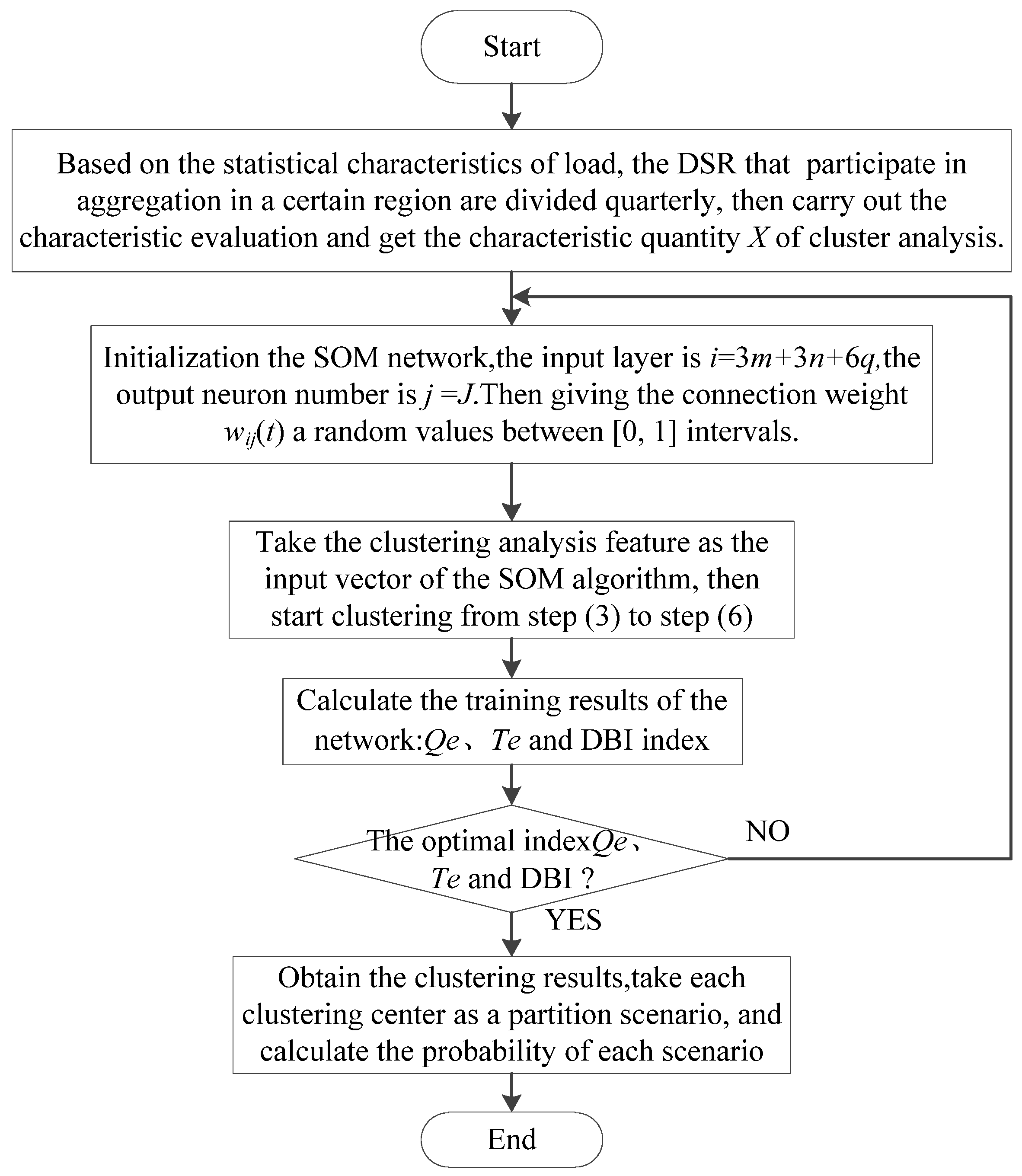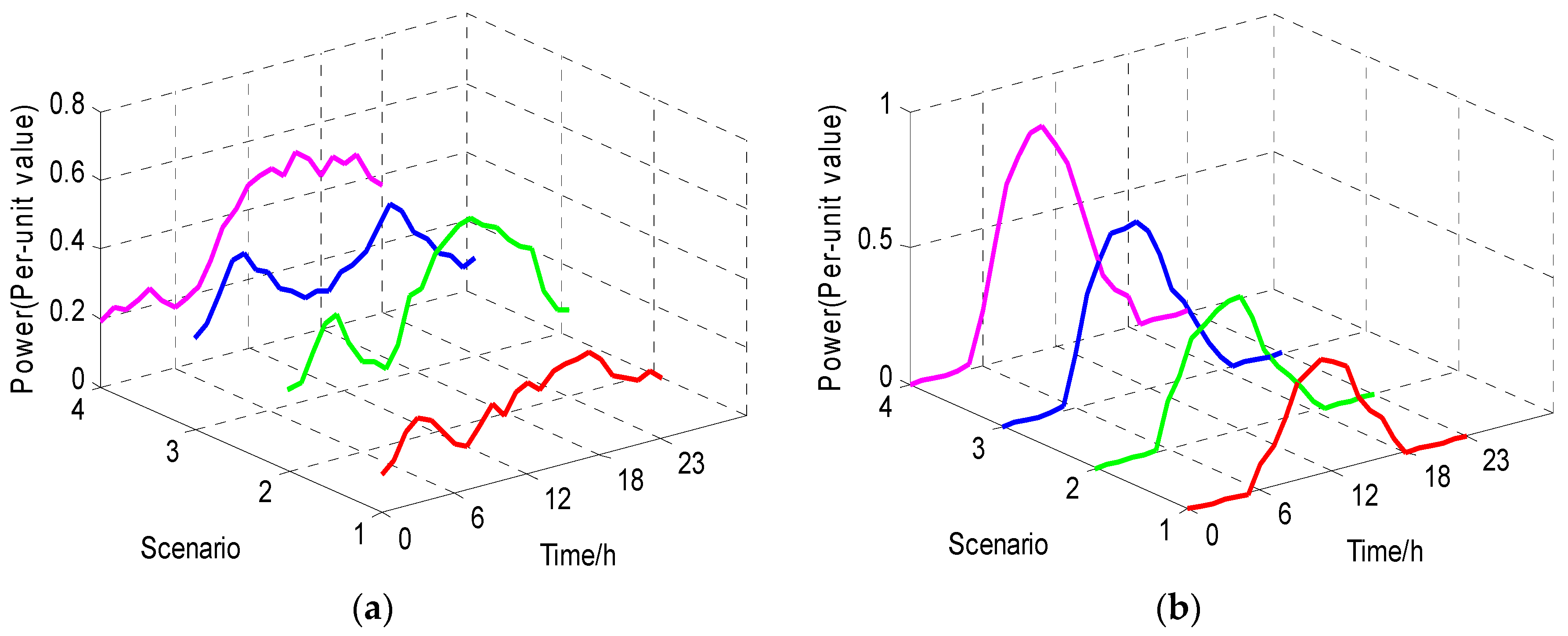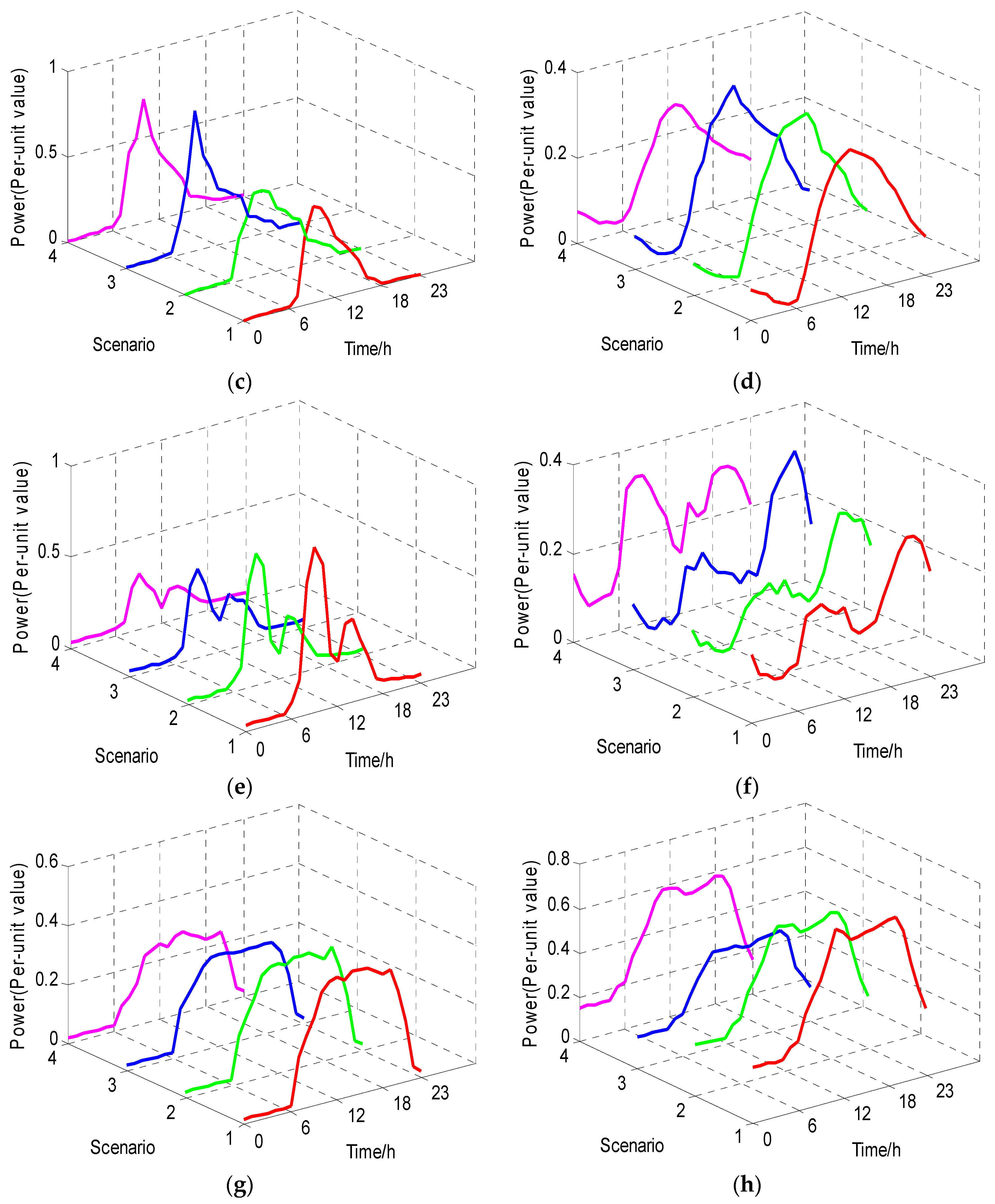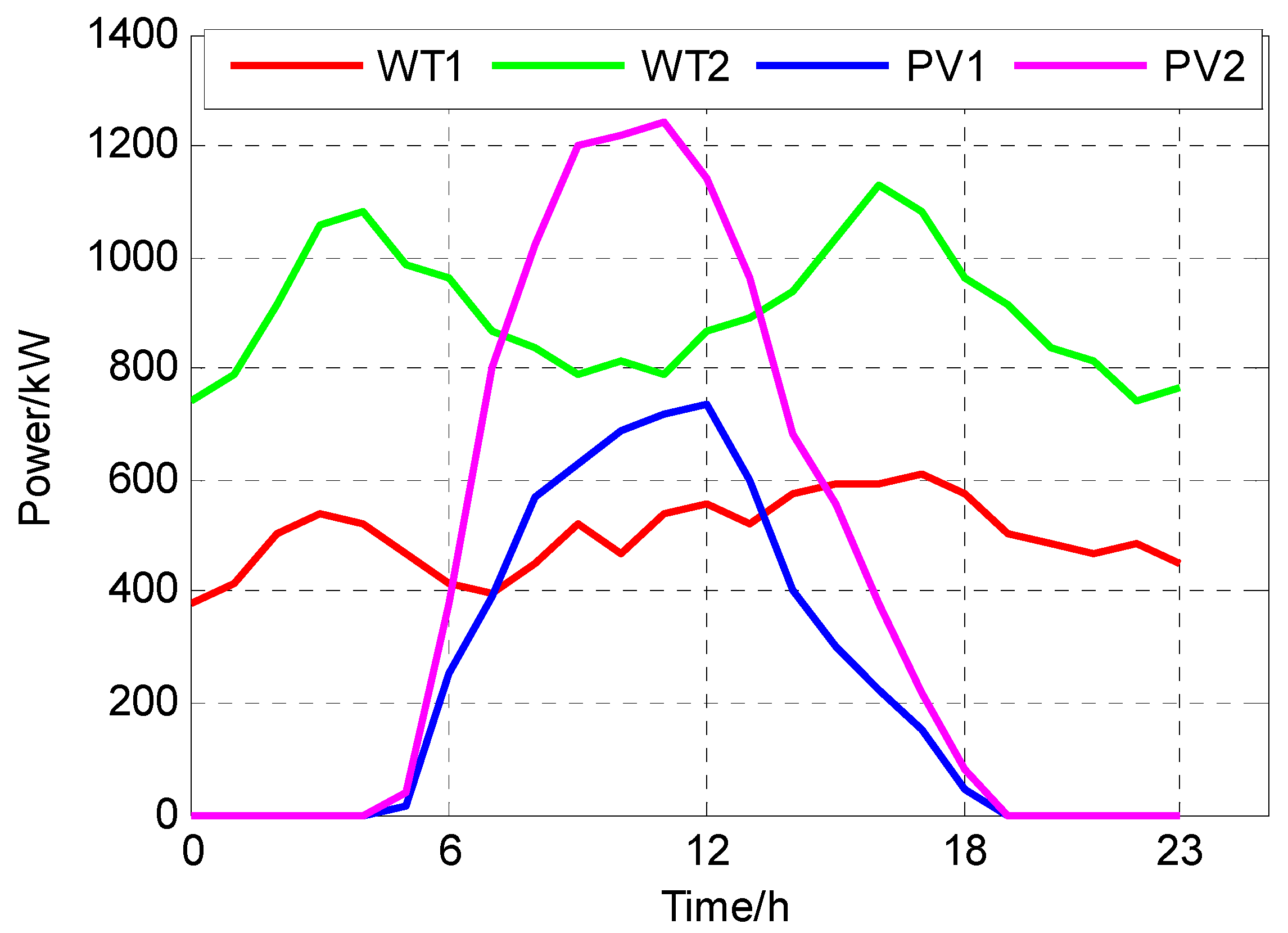In order to give play to the characteristics of all kinds of DSR and their complementarity, and to fully exploit the response characteristics of the response resources, in the case of ensuring that the interests of users participating in the aggregation are not compromised, many scattered, small capacity and different characteristics DSR are aggregated by multi-objective optimization to form a Resource Aggregation (RA) with good load and response characteristics, to realize the efficient utilization of resources and promote the accommodation of DG, but the aggregation of resources requires a certain amount of time, real-time aggregation is unrealistic and it is not easy to achieve, so this paper takes a quarter as a time measure, aggregates separately in each quarter, and fully considers the existence of multi-scenario in the same quarter. This aggregation thought considers not only DSR temporal difference, but also the influence of non-temporal uncertainty. For example, the responsive uncertainty of response resource, the fluctuation of DG daily output force caused by the change of weather and so on. Otherwise, for certain aggregation areas, the rationality of the number of RA should also be taken into consideration, different locations of different participating users should be considered and the principle of nearby aggregation is adopted. Therefore, this paper makes a simplified treatment, regulates that in a certain area, select the suitable object, and construct an RA. Based on the above analysis, in this chapter, a single-quarter DSR optimized aggregation model is established for a specific region.
3.1. Objective Functions
In order to get the optimal construction of the quarterly RA, it needs to take into account the probability of the existence and the appearance of the multi-scenarios. Taking the probability of the scenario as the weight of the single scenario optimization target, the weighted target function of quarterly aggregation is obtained.
(1) Optimal RA load characteristics
(a) The smallest of RA daily peak valley difference:
where
LoadRA(
s) represents the daily load curve of the RA in the
sth scenario, which the
(
s) and
(
s) represent the maximum and minimum values of the daily load curve respectively;
T = 24,
it represents the 24 moments of the load curve;
(
s) is active power of the
ath DG in the scenario
s at time
t;
(
s) is the load power of inflexible load
b at time
t in scenario
s;
is the load power of flexible load
c at time
t in scenario
s;
λa,
λb,
λc are variables, which value are 0 or 1, they represent whether the
ath user in the first class DSR, the
bth user in the second class DSR and the
cth user in the third class DSR participates in the aggregation, respectively. If the value is 1, then it participates in the aggregation and if the value is 0, it does not participate in the aggregation.
(b) The minimum average daily load volatility of RA
The load fluctuation rate is defined as the ratio of the standard deviation of the load active power
σ to the geometric mean
μ of the load active power. The geometric mean of load active power
σ reflects the level and concentration of the load active power, the standard deviation
μ reflects the degree of dispersion of the load active power, and the ratio of the standard deviation of the load active power to the geometric mean reflects the relative size of the load dispersion [
27]:
where,
σs,
μs,
αs are the standard deviation, geometric mean and arithmetic mean of the RA load active power in the Scenario
s.
(s) is the active power value of the RA load at time
t in the Scenario
s.
(2) Optimal response characteristics of RA
(a) The largest daily response capacity of RA:
where,
(
s) is the daily response capacity of the response load
c in the scenario
s.
(b) The lowest RA average daily response cost
In order to encourage the demand response resources to participate in response actively, and to restrain the response user’s default situation of power utilization, we adopt the policy of reward and punishment. First, the resource level (RL) and penalty level (PL) of users are divided according to the response capacity, response time and the default power of different users in a certain scenario, different compensation measure and penalty price are adopted for different resource levels and penalty levels, the classification of different grades for response resources is shown in
Table 1.
This paper analyzes the response cost of resources from the perspective of simplified calculation and defines the response cost as the difference between the cost of compensation and the penalty cost to get the target function with the lowest response cost as follows:
where,
(
s) is the daily default power of the response load
c in Scenario
s;
ci (
i = 1, 2, 3) is the compensation price for the resource level 1, 2, 3 respectively (electricity price of the additional compensation for unit response power);
pi (
i = 1, 2, 3) is the penalty price of penalty level 1, 2, 3 respectively (electricity price of extra penalty for unit default power).
(c) The highest acceptance level of DG in RA
Promoting distributed power acceptance, reducing the curtailment of WT and photovoltaic, making full use of clean energy, reducing the power of traditional thermal power units and achieving energy conservation and emissions reduction effects are of important significance in the construction of resource aggregation scenarios. When RA is constructed, the supply of load power should be given priority to the supply of distributed energy within the aggregates, and the optimization target is shown in Equation (10):
In summary, the total objective function of DSR multi-scenario aggregation is:
3.2. Constraint Conditions
(1) RA scale constraints
The building of RA is to integrate scattered demand side resources, a large number of small and single dispersed resources. It can be aggregated into an aggregator which has a large capacity and considerable response ability to participate in market operation, facilitating unified dispatching of the market. Therefore, the total number of all types of DSRs involved in aggregation is not too small, and the power consumption after the aggregation is not too small:
where,
Nmin(
i)(
i = 1, 2, 3, 4) is the lower limit of the number of DSR in the construction of RA in the
ith season;
is the minimum load power of the aggregator after the RA constructed;
Q∑ is the total electricity consumption of all users;
ξ is a percentage coefficient.
(2) Load complementarity constraints.
In the process of resource aggregation, the complementarity between different loads needs to be fully utilized to reduce the impact of the post-polymerization RA on the system and to improve the stability of system operation [
28].
The measurement of load complementarity is the measure of the difference between different load curves at the same time. In other words, the difference between the load curves corresponds to the similarity between the load curves. The higher the similarity between curves, the lower the complementarity. In this paper, the complementarity between loads is measured by the load complement coefficient
γ which proposes in literature [
28]:
where
β is the weighted correlation function at each time between the two load sequences
y(
t) and
z(
t) which calculates according to the Equation (18):
where, Λ(
t) ≥ 0 is the weight function of active power at different moments according to different degree of importance at different points in time;
σy,
σz are the standard deviation of load sequence
y(
t) and
z(
t), respectively.
In this paper, the sum of the complementary coefficients of the two different user loads in RA is used as the complementarity of the whole aggregator load, as shown in Equation (19):
where
γRA is the measurement of load complementarity between users after the RA is constructed;
γij is the load complementarity coefficient between the user
i and the user
j;
λi is the variable that indicates whether the user
i participates in the aggregation, the value can be 0 or 1, and if it is 1, the user participates in the aggregation.
In order to ensure the complementarity of the internal load of RA, the following constraint is given, where
γmin is the lower limit of load complementarity:
3.3. Model Solution
In this paper, the multi-objective immune algorithm for dynamic niche evolution based on niche technique is employed to solve the multi-objective optimization aggregation model of DSR, and the DSR aggregation scheme that meets multiple optimization targets can be obtained from [
29].
The basic idea of niche is that in the process of optimization of a multivariate multi-peak function, the solution space is divided into multiple niches and then similar individuals are evolved in specific niches to reach the peak in the habitats. Finally, the optimal solution is obtained among the peaks of the whole habitats. The niche genetic algorithm can effectively improve the efficiency of traditional genetic algorithm optimization; and avoid falling into a local optimal solution. Niche multi-objective immune evolution is a kind of algorithm based on the principle of immune response. The main idea is to use the multi-objective function of the problem to be solved as the antigen of the intrusion immune system, the feasible solution of the multi-objective function as the antibody produced by the immune system, and the affinity of antibodies and antigens (fitness) is used to describe the degree of approximation of the feasible solution and the optimal solution [
29].
The affinity of antibodies mainly consists of two aspects: affinity between antibodies, i.e., the similarity, and the affinity of antibodies and the antigens, i.e. the fitness. The similarity of the antibody can be described by the Euclidean distance between the antibodies. If the
ith feasible solution is
Xi, and the
jth feasible solution is
Xj, then the ||
Xi −
Xj|| is the Euclidean distance between
Xi and
Xj. It is based on the exclusion mechanism to exclude similar individuals in the process of evolution and to maintain the diversity of feasible solutions; therefore more solutions can be searched. The fitness of antibody to antigen can be represented by the reciprocal of the objective function shown in Equation (15). The smaller the objective function value of the antibody is, the closer it is to the optimal solution, and the higher the fitness is. For antibodies with a distance less than a certain value of L, the size of the fitness
A(
Xi) and
A(
Xj) is compared. If
A(
Xi) >
A(
Xj), a strong penalty function is applied to
A(
Xj), which makes its fitness become very small. In later evolution,
Xj will be eliminated with great probability. The main process of the multi-objective immune algorithm is shown in
Figure 6:
